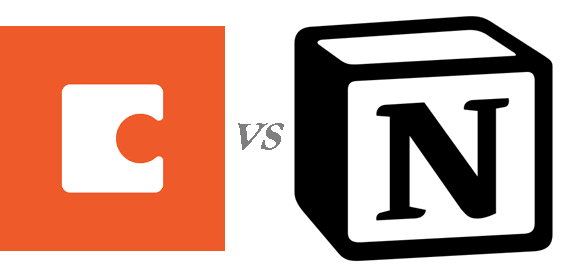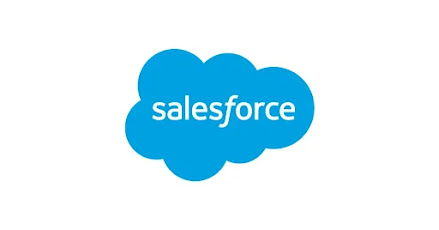A comprehensive beginner’s guide to choosing a cryptocurrency exchange platform
The amount of cryptocurrency content available can very easily leave a rookie investor in a maze of information that is more likely to confuse rather than inform. Information anxiety is real and can be potentially dangerous to new crypto investors.
Are you looking to get into crypto trading but have no idea where to start? Here are a few comprehensive tips to consider when choosing a crypto platform (exchange) to do your trading.
A crypto exchange platform is essentially a marketplace where investors can buy and sell cryptocurrencies. It actually works quite similarly to the conventional stock exchange.
The seven metrics proposed are supposed to help an investor make an informed decision on the platform to choose. These metrics are broad, so they cover many of the essential aspects of how these platforms operate. Experts would argue that there are a lot more variables to consider, and technically they would be right. But, these tips are primarily for beginners. If you need more variables than these, there is a high likelihood that you are no longer a beginner.
1) Basic trading features.
Well, if you choose an exchange platform, one of the most essential expectations is the ease of doing trade. In this metric the focus is on the following:
The number of cryptocurrencies available for trade – It may come as no surprise that almost all high-volume crypto exchanges have hundreds of cryptocurrencies that can trade on their platform. This is great for a beginner because of the convenience of trading with your preferred coin. Binance, FTX, Coinbase, and Gemini are by volume some of the largest exchanges and they accept all major cryptocurrencies from Bitcoin to Litecoin. On the other hand, Coincheck, a Japanese exchange only allows Bitcoin and Ethereum to be traded on its platform. Bitstamp allows trading of all major cryptocurrencies on the platform but overall is limited to less than 70 types of coin. So do your research and check if your preferred coin is tradable on the platform.
The number of fiat (conventional) currencies accepted – Binance, OKX, Huobi Global, and KuCoin all accept more than 40 fiat currencies on their platforms. While some like Poloneix, BitMex, and Phemex do not accept trading or exchange of coins with conventional currencies. Pick your preferred platform according to the fiat currency you normally use.
Method of depositing and withdrawing from the platform – This is a matter of convenience. Different crypto exchanges have different ways of depositing and withdrawing coins and fiat currencies from their platform. Bank transfer, wire transfer, PayPal, and ACH are the most common transfers. Kindly choose a method that will allow the exchange platform to improve your trading habits.
Applicable fees – Understanding the applicable fees for exchange platforms is important. The fee structures of exchanges vary from one platform to another. So you should be able to understand and be prepared for every applicable fee during trading. There are different types of fees. Look out for these common fees:
- Trading fees
- Deposit/withdrawal fees
- Interest/ borrowing fees
- Liquidation fees.
Trading fees vary by more than an order of magnitude, from 0.1% to more than 1% on Coinbase and Gemini. Bibox, Binance, Coinspot, HitBTC, and KuCoin offered the lowest taker fee of the surveyed exchanges at 0.1%. Binance and Bibox offer even lower rates when paying with their exchange tokens
Most exchanges do not charge fees on deposits made via Bank ACH or direct cryptocurrency deposits, but may typically charge additional fees for purchases/deposits made via wire transfer or credit cards. Cryptocurrency withdrawal fees are typically limited to blockchain transaction costs, but these can vary considerably depending on the cryptocurrency
In sum, always make sure to review the fee schedule at your preferred exchange and consider any applicable discounts for volume or usage in your calculation. When you are ready to trade, connect your exchange accounts to CoinTracker to track your trades and fees across exchange accounts for free.
2) Platform availability
Kindly check if crypto exchanges are available in your country or region. Most of the high-asset value exchanges are available in most countries. They might not be regulated by the respective central banks, but they are not illegal to trade on. Some countries however have outrightly banned some exchange platforms and some cryptocurrencies. Smaller exchanges may be available in your region but use a limited number of cryptocurrencies for trade. Be sure you get the right information before getting into any exchange platforms to avoid any legal or jurisdiction problems.
- eToro for example is globally regulated.
- Coinbase is US based but available in 44 states.
- Kraken is US and UK-regulated and is also available in some Asia Pacific jurisdictions.
- Binance is currently the largest exchange in the world and chances are it is regulated in your country or it is not illegal to trade with it.
3) Customer support
Offering real-time assistance should be non-negotiable with exchanges. But there is no standardized way of providing customer support. Exchanges usually provide support mostly according to the trading habits of their investors or how efficient it is for them to deliver those services. Of course, there are those who do it better than others. When you google crypto exchanges and customer support, 9/10 times you will discover that Kraken unanimously has the best customer support.
4) Educational resources
All exchanges that I have explored usually have better-than-average how-to manuals. So take your time to read and understand how to trade on these platforms. They also provide great online communities where you can seek advice or even get a mentor or two to help on your trading journey. Admittedly, some platforms have a steeper learning curve than others, but in my personal experience, those platforms are usually better in the long run. An example is Binance. Do not be afraid to also do your own research outside their platforms. There is so much cryptocurrency content on the internet these days and a lot of it is actually good to read for a novice investor.
5) Security and insurance
Of course, security is important when trading online. You have to be confident enough that your trading information and assets are protected. On security, as I mentioned in the intro, the maturity of the cryptocurrency space has tremendously boosted the security of data and virtual assets. Ideally, if you are trading on international exchanges and you follow their security protocols, chances are that you have nothing to worry about. When it comes to protecting user data and assets, most breaches are caused by user errors and not the actual platforms. This is not to say that these platforms are perfect. They are not. I’m just emphasizing the importance of taking personal initiative for security. One of those initiatives is following the suggested security protocols provided by the trading platforms.
There are also waves taking form in the crypto-insurance space. This is still in the initial stages, but companies like Lloyd and Relm Insurance are coming in to protect investors from losses beyond their control. These losses are primarily linked to system hacks. Cryptocurrencies are still highly volatile therefore firms like Coincover, although not an insurer in the conventional sense, offer individual protection technology and software solutions that prevent crypto businesses from losses due to theft or human error. It covers digital assets against hacking, phishing, malware, device theft, Trojan software, and brute force attacks.
6) Storage options
Choosing a preferred storage option for your assets is not just a matter of convenience, but also security. Cryptocurrencies once purchased are stored in wallets. There are two main types of storage options in the cryptocurrency universe: Hot and cold storage. Hot storage means that your wallet is connected to an app or a platform on the internet. While cold storage is the opposite, in that your wallet stores your assets offline, often on an external thumb drive. Both of these options provide different levels of security for your assets and both have pros and cons. Picking the right one depends primarily on your trading habits. Some experts may even suggest that a combination of both is best. Because storage options are linked to security, we strongly suggest that you carefully consider the right option for your assets and trading habits.
7) Crypto rewards
We all like rewards and freebies, right? Well, this is probably not an essential metric when trading but we have seen more and more cryptocurrencies and exchange platforms roll out credit cards for their users. Here are some common ones, but be sure that more are coming.
- BlockFi Rewards Visa® Signature Credit Card
- Upgrade Bitcoin Rewards Visa® Credit Card
- SoFi Credit Card
- Brex Card
- Venmo Credit Card
- Gemini Credit Card
Each card has its own way of rewarding users. So you can pick the one that suits your taste. If rewards that come with conventional credit cards from Chase and American Express can have an effect on how you conduct your business, then certainly crypto-credit cards can. However, as much as you will be excited to read about all the rewards and freebies, do not forget to read the legal fine print as well.
Summary
Have as much information as you possibly can before investing in any platform, but be careful about where you get your information from. Websites like The Wall Street Journal and Forbes are great sources of summarized content and the latest news on cryptocurrencies. Here at The Tech Informant, we provide detailed analysis of crypto news and information. Like, have you heard about Crypto whales? Read how they can affect how you do your trading.





Comments
Post a Comment